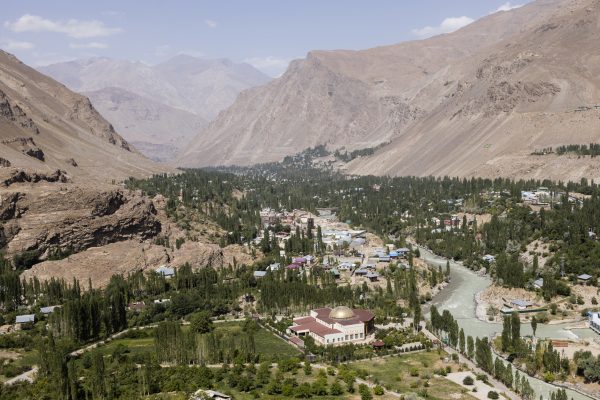
The latest outbreak of violence in GBAO followed six months of tensions after nearly 30 years of both pressure and government neglect.
On May 17, Tajik media outlet Asia-Plus announced that it would no longer be covering events in the Gorno-Badakhshan Autonomous Oblast (GBAO) following threats of closure from the government. The same day, four journalists affiliated with Radio free Europe/Radio Liberty and Current Time were assaulted in Dushanbe after interviewing an activist from the region who was later arrested.
A day earlier, clashes between police and protestors in the region’s capital, Khorugh, resulted in the death of a 29-year-old man.
Asia-Plus’ note was a troubling signal of an authoritarian government preparing to do awful things – and a preference to do so where no one can see.
By May 18, the Tajik government cracked down, hard.
Diplomat Brief Weekly Newsletter N Get briefed on the story of the week, and developing stories to watch across the Asia-Pacific. Get the Newsletter
The latest outbreak of violence came after six months of tension and protests, but in a broader sense it followed nearly 30 years of pressure accompanied in alternating bouts with gross government neglect. The May 18 crackdown, which the government labeled an “anti-terrorist operation,” resulted in nine deaths, all but one protesters, according to official accounts. Officials also said that more than 70 “active members of a terrorist group” had been arrested.
Locals told RFE/RL that the bodies of 21 protesters had been returned to their families for burial after May 18 and that far more had been arrested for participating in the protests.
The Mighty Pamirs
GBAO encompases the entirely of eastern Tajikistan, laying itself over the mighty Pamir Mountains. Covering 24,800 square miles, the region makes up around 40 percent of Tajikistan’s total territory. Mountainous and rugged, GBAO sits to the north of Afghanistan’s famed Wakhan Corridor, runs alongside Xinjiang’s Kashgar Prefecture, and borders southern Kyrgyzstan. To travel to GBAO, foreign tourists need a special permit.
In the early days of Tajikistan’s independence following the 1991 collapse of the Soviet Union, the region became a center of opposition activity. Independence presented an opening for the Pamiri people, an ethnic and religious Ismaili Shia minority in Sunni-majority Tajikistan, to gain a voice in their government.
The Soviet Union had focused its political and development efforts in western Tajikistan, centered around the cities of Dushanbe and Leninabad (now Khujand) on the edge of the Fergana Valley. The Soviet Tajik government had been dominated by people from Khujand, with competing factions of people from Kulob, in southwestern Tajikistan, also well represented in the halls of power.
By 1992 a civil war broke out that roughly mapped onto the west-east divide, with a melange of Islamists and democrats joining the Pamiris in their mutual quest to gain a say in the new country. As the war progressed, power shifted – but not to the east. Emomali Rahmon, born in Kulob, rose to the presidency where he remains nearly 30 years later. The peace agreement reached in 1997 charted out quotas for opposition members in the Tajik government, an arrangement that Rahmon spent the better part of the last two decades eroding.








